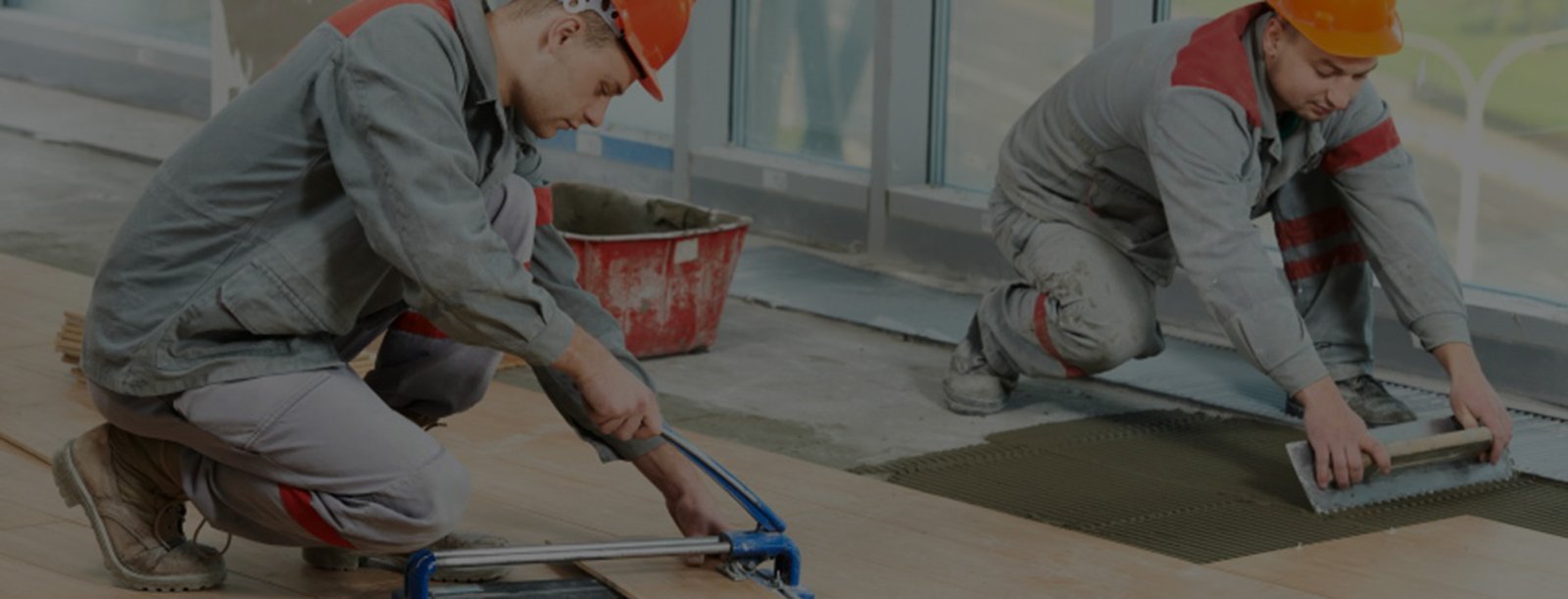PREPARATION
Prepare
The surfaces were the tiles are to be laid must be properly finished and curing done at least for one week.
Beware of Iron Roads
Care should be taken that iron rods used in concrete are not exposed at any place. If the tiles are laid with<br /> exposed iron rods subsequently there may be rust formation and air bubbles that may lift up the tiles
Count Quantity
The total area to be covered should be worked out and additional 5% should be included to quantity towards wastage / breakage for order, so it doesn’t lead to shade variation on re -ordering. Link to Quantity Calculator/ Or Calculate hear.
Take our Advice
In case of multistory building it is advisable to order entire quantity of each floor from the same batch in one lot to avoid shade variation, so you can achieve desired combination on each floor.
Check Design
Before fixing the vitrified tiles lay them in the desired pattern and make sure that they give proper shade and design. The Company Will Bear No Liability after the Tiles are Fixed. So please ensure uniform level, shade and design before fixing the tiles with concrete.
Clean
The bed surface should be perfectly clean and free from dust, paint, scraps, grease, oil etc.
INSTALLATION OF TILES
With Cement
- If the bed surface has been left dry for a long time it should be washed and made sufficiently cured.
- Make suitable bedding using cement and sand mortar with the ratio of 1:4 along with water to make a
consistence paste, use this paste to make a bedding of 20 to 30 mm thickness after checking the levels
through 4 corners of the area. - Kindly look for the arrow on the back of the tile and always follow any one laying pattern as shown here.
- If the arrows are not followed the proper design may not be achieved and also it may affect the alignment
of the tile - The work size will be as per ISO specifications. As part of internationally accepted laying practices, use of 2
to 5 mm spacers recommended - Apply fine cement slurry to the back of the tile to ensure proper and full bonding on the surface
- For proper bonding Press the tiles gently with a wooden mallet to make proper adherence. (Don’t use iron
hammer or any heavy material to press the tile). - After fixing the tiles, extra mortar etc. should be cleaned with wet cloth or sponge and allow setting for
two days, please avoid walking on the tiles for these two days. - After proper setting, the tile should be suitably cleaned and there after grouting should be done with
matching grout. - Since most of the carpentry, electrical or interior works are done after the installation of tiles, it is
important to provide a protective cover on surface of the tiles, it is recommended to use POP of 12 to 15
mm thickness and this shouldn’t be opened until area becomes ready for occupation - Use of newspaper below the POP should be avoided since the printing ink and other black spots of the
newspaper are likely to leave permanent stains on the tiles, it is recommended to use thin plastic layer on
the surface - The tiles can also be cleaned by mild acid; however Hydrofluoric acid and its derivatives should not be used
without knowing its actions and reactions. You may concern the chemical properties and reactions for the
clearance of the stains to our technical experts as and when required on info@sentosa.in our technical
experts will assist you as soon as possible for further proceeding of your problems.
With Chemical Adhesive
The same guidelines given above holds good for almost all the points except that instead of using fine
slurry of cement at the back of the tiles appropriate chemical fixing adhesives available in the market can
be used.
- It should be ensured there is 100 % coverage of the adhesive behind the tiles.
- The adhesives layer should be approximately 10 to 15 mm thickness.
- While using adhesive it is very important to maintain level and flatness.
- Setting / curing time should be allowed at least 2 days to avoid air bubbles or warp ages on the tiles.
On Old Existing Tiles
The same guidelines given above holds good for almost all the points except that instead of using fine
slurry of cement at the back of the tiles appropriate chemical fixing adhesives available in the market can
be used.
- It should be ensured there is 100 % coverage of the adhesive behind the tiles.
- The adhesives layer should be approximately 10 to 15 mm thickness.
- While using adhesive it is very important to maintain level and flatness.
- Setting / curing time should be allowed at least 2 days to avoid air bubbles or warp ages on the tiles.
CORRECT WAY

WRONG WAY


